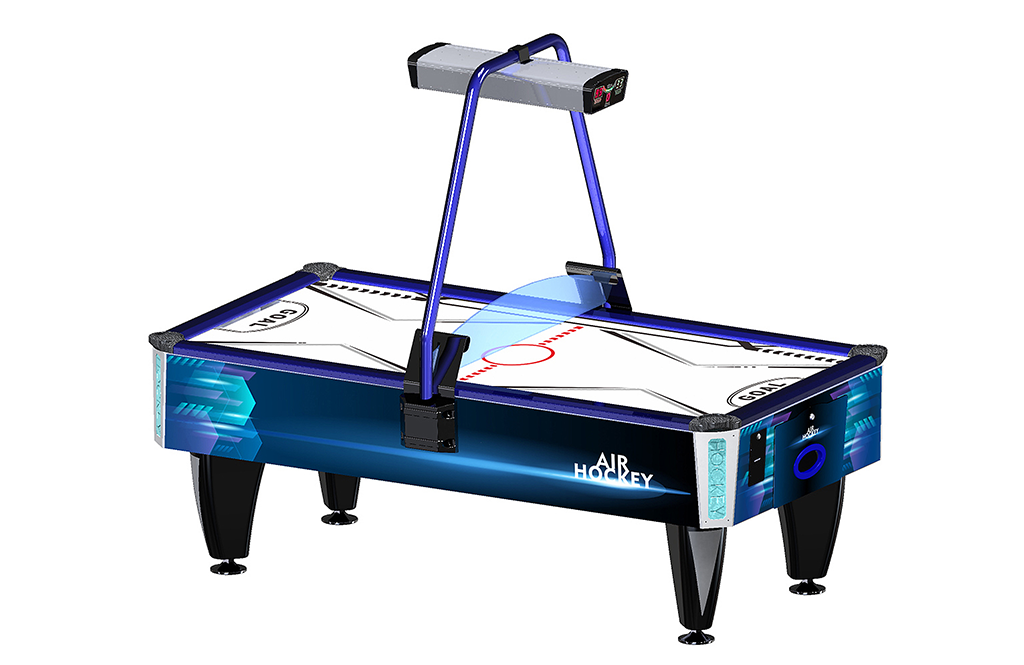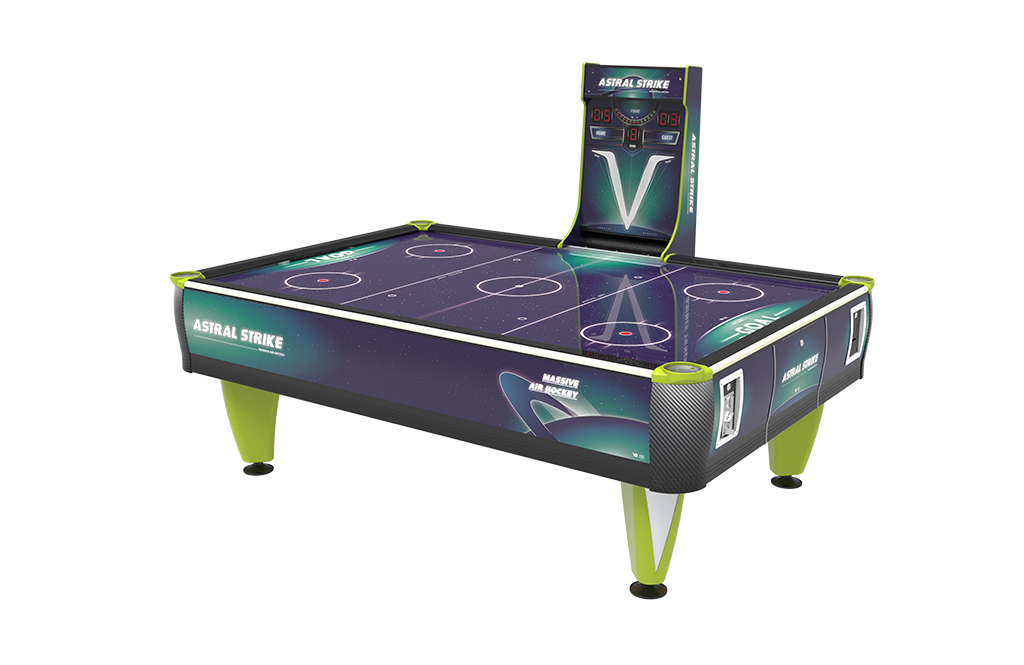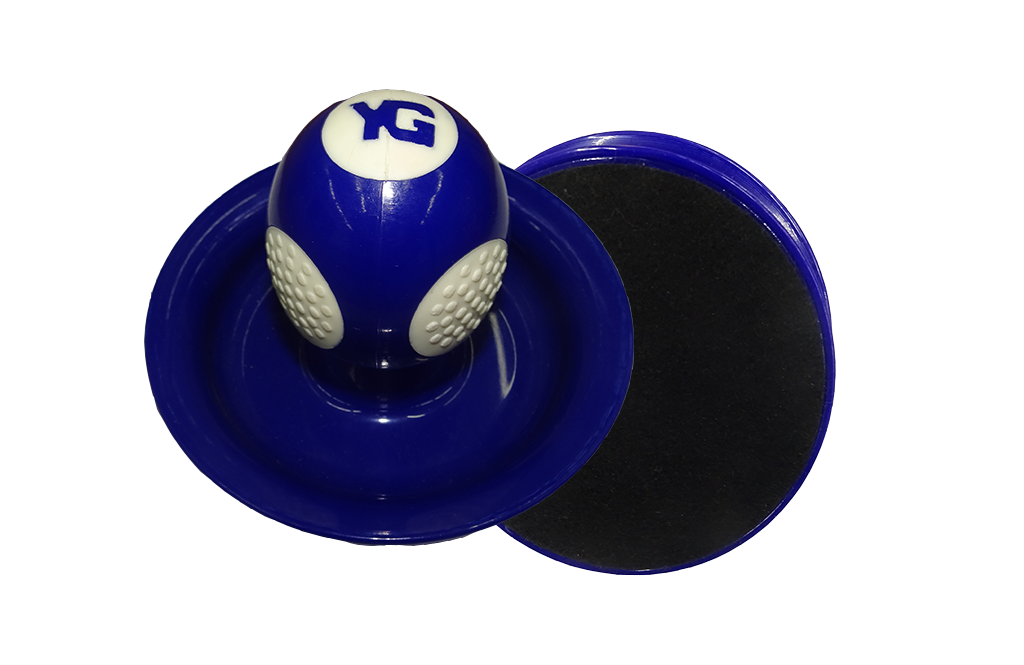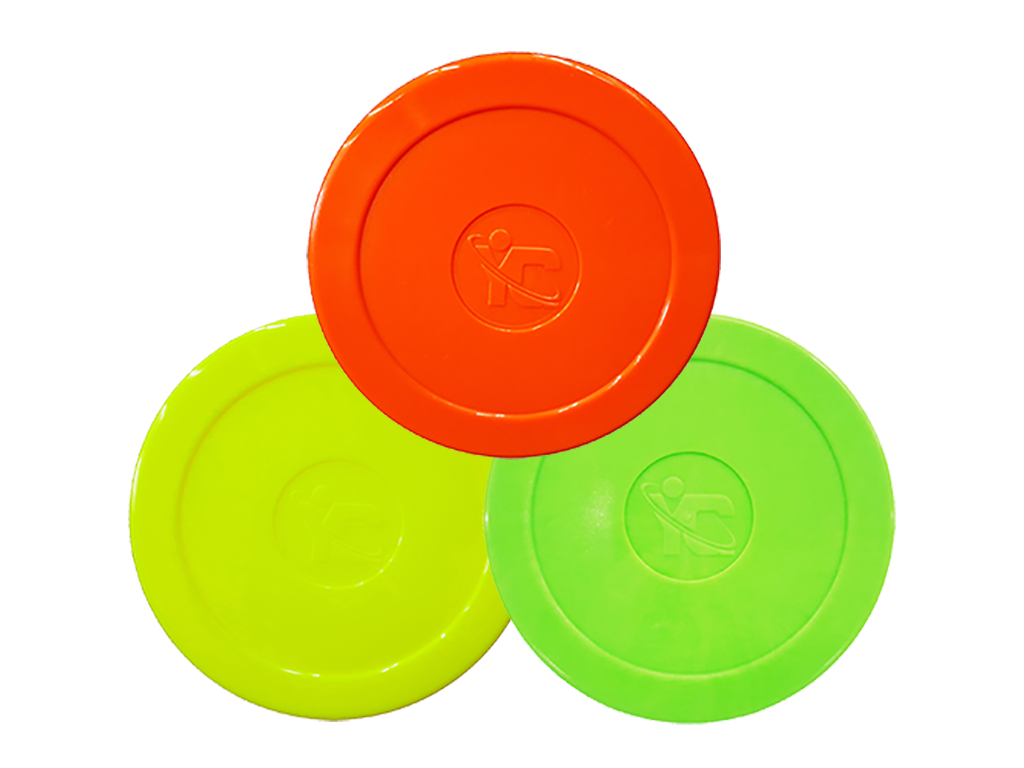
Contents
Air hockey is a fast-paced, engaging game enjoyed across all age groups. Celebrated for its quick rallies and strategic play, it has become a staple in arcades and recreational centers worldwide. From learning what is air hockey to mastering air hockey rules and core techniques, knowing the fundamentals is key to fully enjoying this skill-focused sport.
Air hockey is a competitive table sport where two players face off using handheld mallets to strike a plastic puck across a specially designed smooth surface. The table features countless small air holes that emit gentle bursts of air, reducing friction between the puck and the surface. This allows the puck to glide with ease, closely simulating the smooth motion of ice hockey on a polished rink. The steady airflow also introduces a level of unpredictable gameplay, adding challenge and excitement to every match.
Developed in the early 1970s by engineers at Brunswick Billiards, air hockey was designed to replicate the fast-paced action of ice hockey. The game quickly gained popularity due to its ease of play, speed, and competitive nature. Initially found in arcades and recreation centers, air hockey has evolved into a recognized competitive sport with official tournaments worldwide.
Source:
https://www.brunswickbilliards.com/pages/180-years-of-brunswick-billiards
https://airhockeypros.com/index.html
To fully enjoy and compete in air hockey, you’ll need a few essential pieces of equipment. Understanding each component improves gameplay and builds a stronger foundation for mastering air hockey.
The air hockey table is the centerpiece of the game. It features a perforated surface that blows air upward, creating a cushion that lifts the puck and minimizes friction. This design enables fast, smooth, and unpredictable gameplay. Tables may vary in size, but all include raised edges and goal slots to keep the game dynamic and contained. This air-powered surface is exactly how an air hockey table works.

The mallet, also called a paddle or striker, is used to control and strike the puck. It has a flat, round base and a knob-style grip designed for comfort. Mallets come in various sizes and weights. Lighter ones enable faster handling, while heavier ones add power. A smooth base ensures accurate, spin-free shots.

The puck is a lightweight plastic disc that glides on the table’s air cushion for smooth, fast movement. It comes in various sizes and weights to affect speed and control. Many are brightly colored for visibility, and some have beveled edges to enhance certain shots. As the object is constantly struck during play, it is central to the strategy of air hockey.

Mastering the air hockey rules is fundamental to enjoying competitive play and ensuring fair games for all participants. Key rules include:
Now that you’ve got the basics down, let’s look at how you can level up your skills and play like a pro. Try these simple techniques to sharpen your game!
Proper grip plays a key role in air hockey performance. Rather than pressing down on the top of the knob, it’s more effective to hold the mallet by the sides or lower part with the fingers. This grip improves wrist mobility, allowing for faster and more precise movements in both offense and defense.
For effective defense, position the mallet about 20 cm in front of your goal’s center. This spot allows quick responses to shots from either side and helps block rebounds efficiently. With consistent practice, this positioning becomes a reliable way to reduce goals and stay one step ahead during intense rallies.
The mallet’s round shape enables a wide variety of puck trajectories depending on where contact is made. Even with the same arm motion, changing the strike point can send the puck in completely different directions. For example, hitting near the edge can deflect the puck at a sharp angle, while striking the center often results in a straight, direct shot. This technique is especially useful in high-speed matches, where unpredictability is key.
While air hockey is generally safe, a few precautions help keep the game smooth and injury-free:
For those just getting started, here are answers to a few of the most common questions about air hockey gameplay and equipment.
Q1. Is air hockey a sport?
Yes, air hockey is officially recognized as a competitive sport featuring tournaments, regulated rules, and professional players. Unlike many traditional sports that require large spaces or complex gear, air hockey offers intense gameplay in a compact format, blending reflex-driven action with strategic precision.
Q2. How do I hold an air hockey mallet?
Grip the mallet gently around the knob, keeping the wrist relaxed to allow quick and accurate movements. Avoid gripping too tightly, as this can restrict flexibility and slow down response time.
Q3. What size is a full-size air hockey table?
A standard competitive air hockey table measures around 84 inches (7 feet) long and 42 inches wide. This is considered a full-size table, often used in official competitions and professional tournaments.
Air hockey blends simple rules with fast-paced action, offering a mix of instant fun and lasting depth. Grip, positioning, and shot control all contribute to faster reflexes and smarter plays, whether for casual games or organized competitions.
For those seeking high-quality air hockey equipment, Yuan Gong offers premium tables built for both recreational and professional applications such as Astral Strike Air Hockey Table. As part of our services, Yuan Gong also provides air hockey setups for exhibitions, trade shows, or on-site competitions, bringing energy and interaction to any setting. Contact us to learn more about customizable air hockey solutions that elevate your event experience.